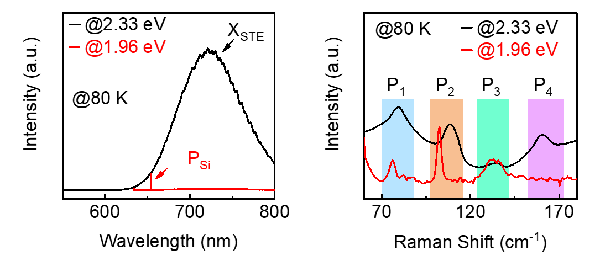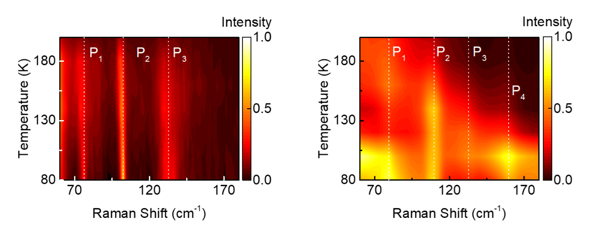Crystals with a 'soft' lattice are prone to distortion and deformation, which leads a strong excitons-phonons coupling. The strong coupling between the crystal lattice and excitons would lead to the formation of self-trapped excitons (STE), which are one type of bound state excitons. Unlike bound state excitons usually formed by binding to defects, STE can be produced even in a perfect crystal lattice. Since STE are produced by the coupling of excitons and phonons, they can be regarded as bound state excitons in an excited state. Once the excitons recombine, the lattice returns to its original state, and the self-trapped state disappears.
The material with STE usually has a photoluminescence (PL) emission with a large Stokes shift, and the emission spectrum has a large full width at half maximum and presents white light emission. Currently, the white light source for illumination is mainly produced by mixing semiconductors with different bandgap or by using phosphors. Due to the difference in lifetime of emitters, the device is prone to temperature color drift. Materials with STE emits white light intrinsically and has high quantum efficiency, making them as ideal white light illuminating materials. However, there is currently a lack of detection means to directly characterize the distortion of the crystal lattice in the excited state. Spectral characterization has the advantages of non-contact and low destructiveness, and Raman scattering spectroscopy has been proven to be an effective method for studying lattice vibration, deformation, and bound state carrier (exciton) transitions.
Professor Dehui Li's research group from Huazhong University of Science and Technology proposed in Chinese Optics Letters Volume 19, Issue 10 (Junze Li, et al., Identifying self-trapped excitons in 2D perovskites by Raman spectroscopy.) to use Raman spectroscopy to characterize STE in two-dimensional perovskites in excited states.
By changing the wavelength of the excitation laser, the PL and Raman spectra of the perovskite were measured in both excited state and non-excited state (Fig. 1). The Raman peaks P1 and P2 show a red shift under excited states, indicating the distortion of the crystal lattice, whereas the temperature-sensitive Raman peak P4 under excited states verifies the presence of STE (Fig. 2). Combining with the emission spectra, the relationship between the STE and the Raman peak is established. Raman peak shifting and extra Raman scattering peaks can be borrowed to identify the existence of STE in 2D perovskites. This work provides an alternatively simple method for characterizing STE.

Fig. 1 The PL spectra (left) and Raman spectra (right) of the two-dimensional perovskite in the excited state (@2.33 eV) and the non-excited state (@1.96 eV). Psi is the Raman peak of the silicon substrate.

Fig. 2 Raman spectra of two-dimensional perovskites in the non-excited state (left) and excited state (right) at different temperatures.


